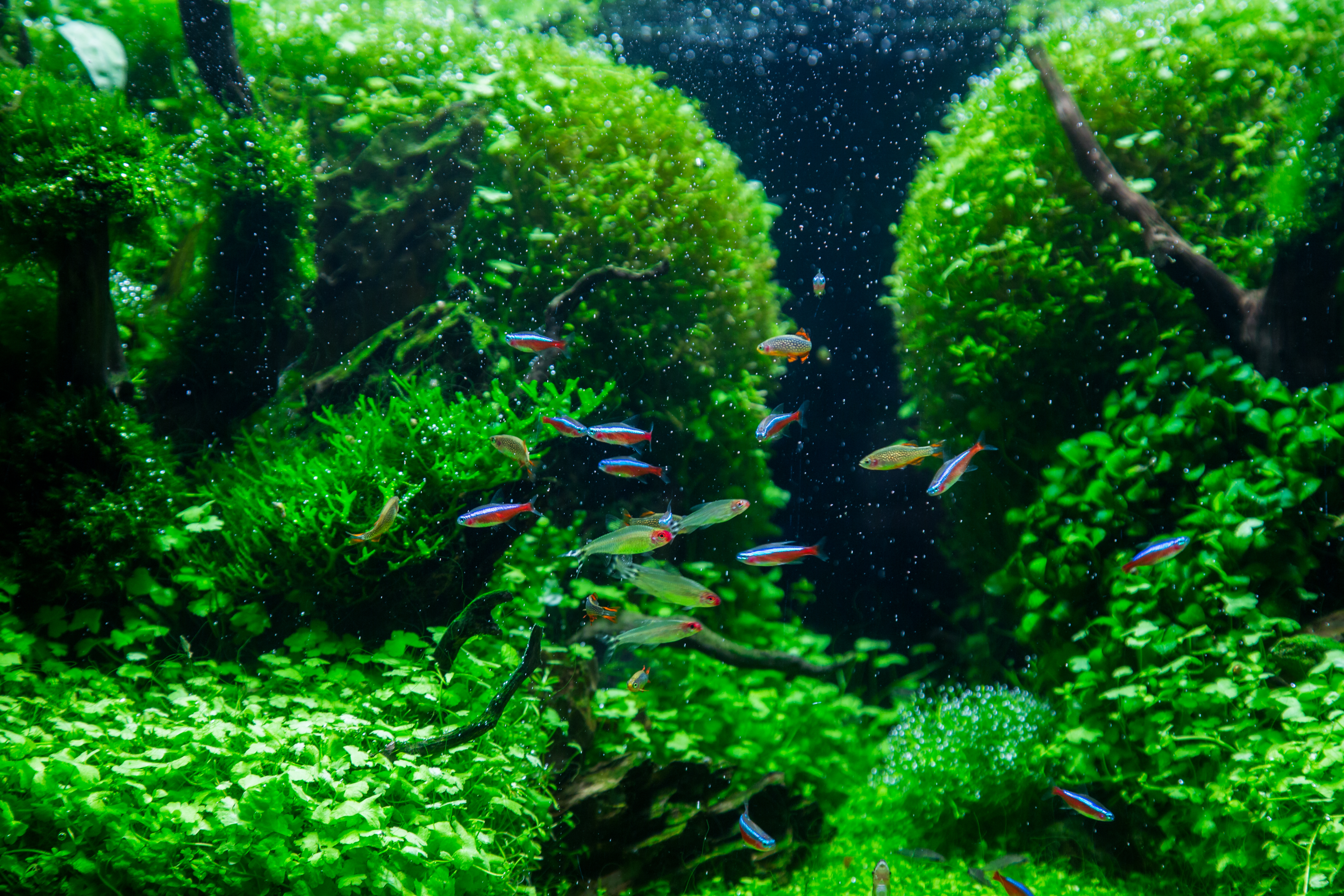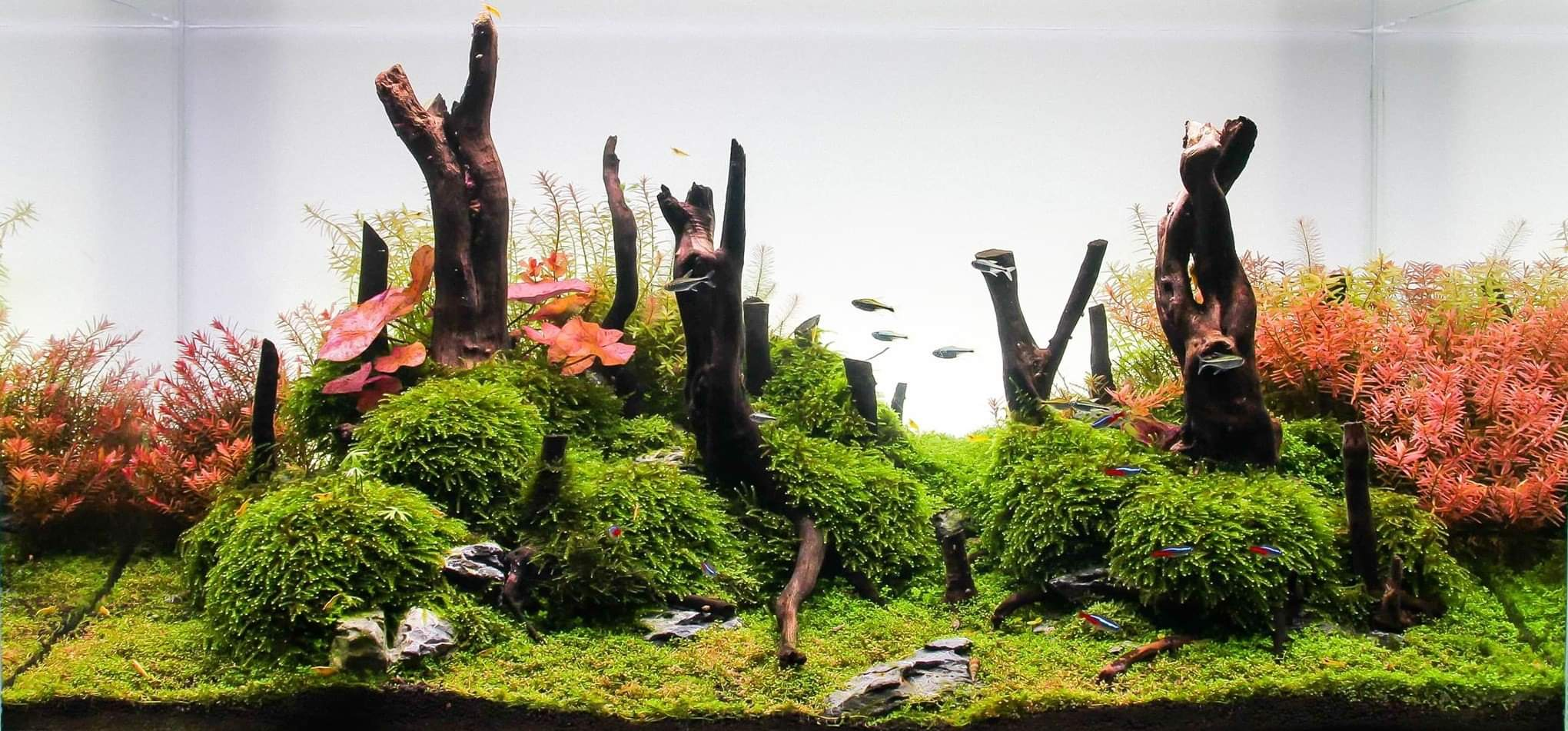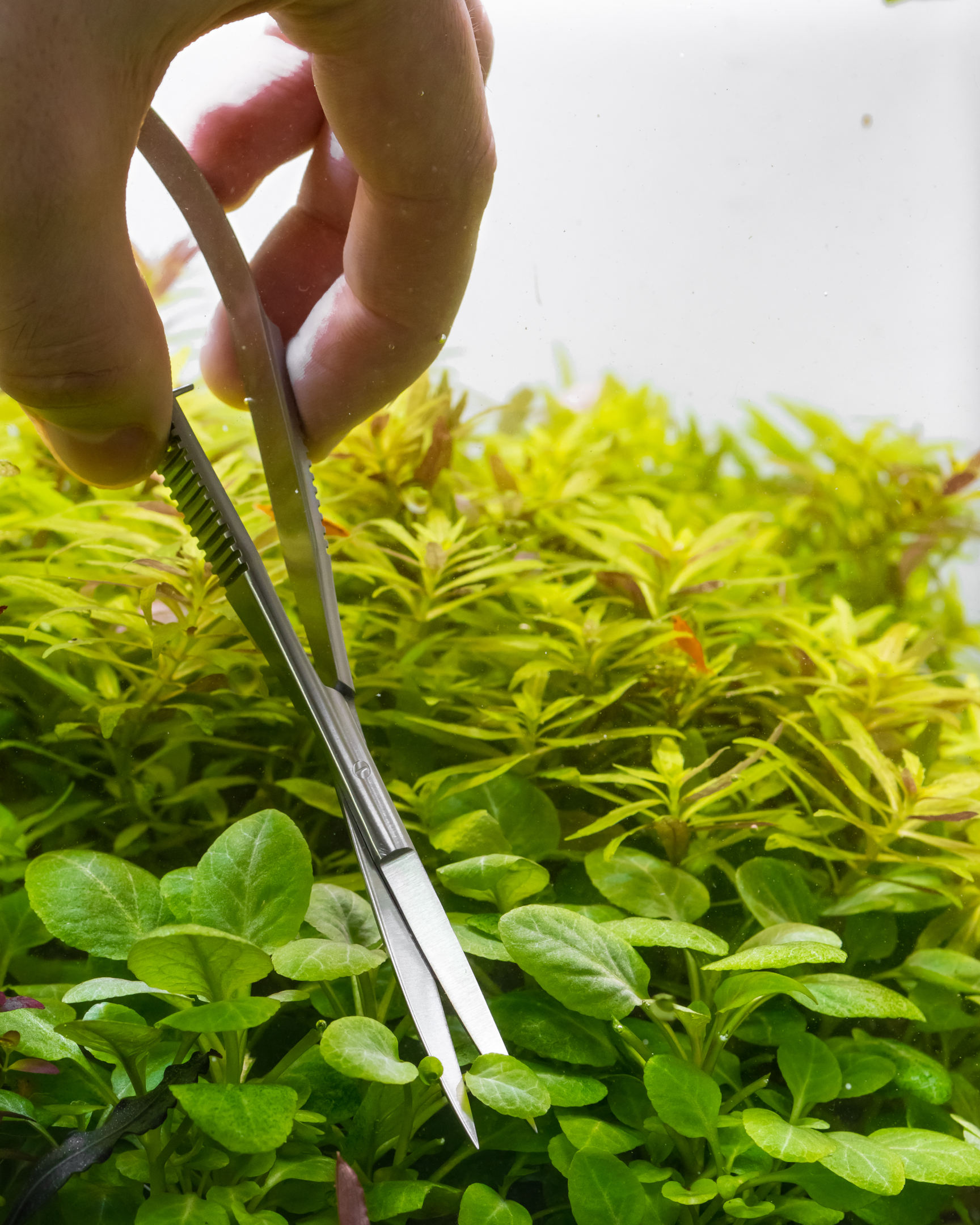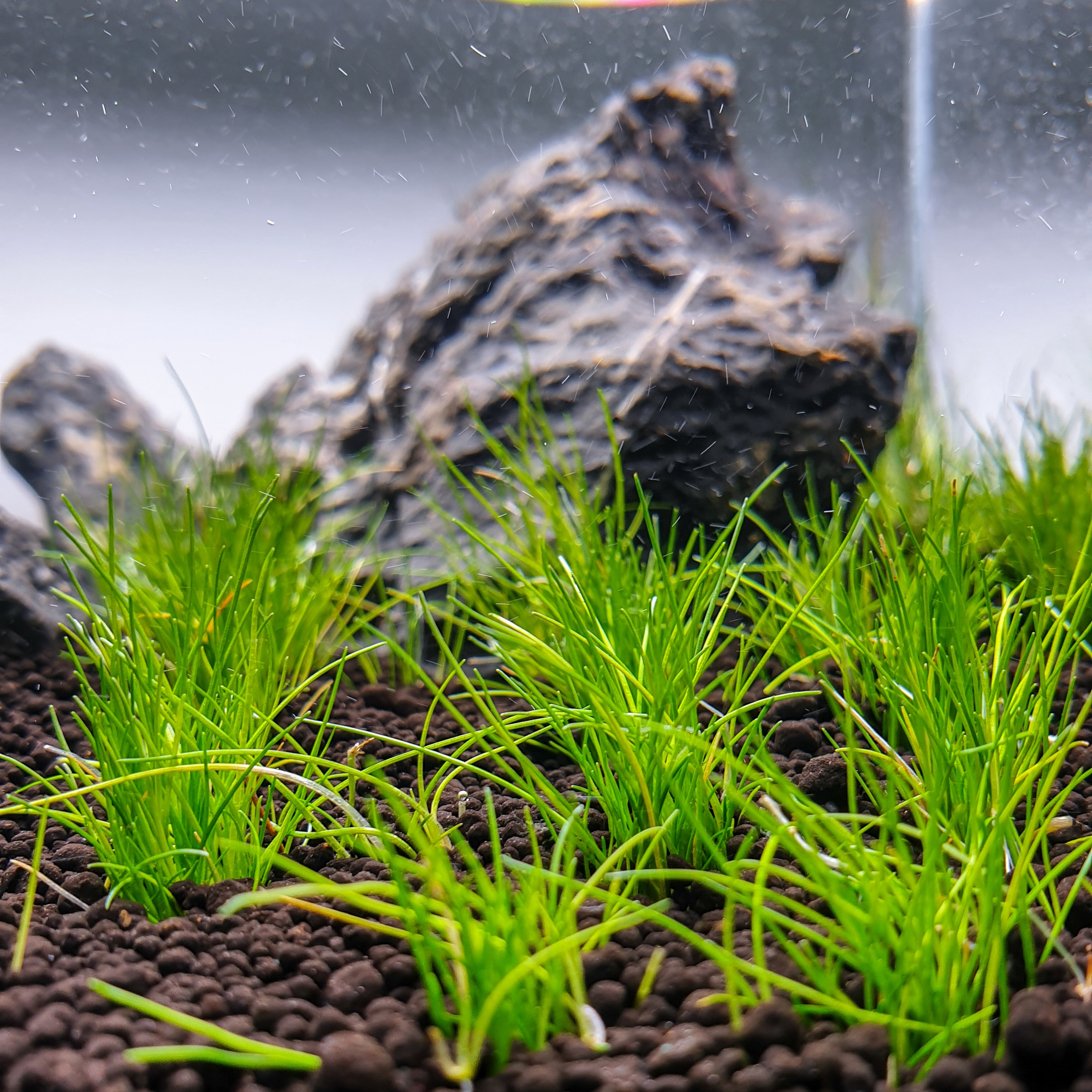Aquascaping maintanance- learn what to do and when!
Now that the tank is all set up and flooded, aquarium maintenance begins. This is where most people take for granted. A lot of newbies would try to learn how to create a beautiful aquascape, learn the tricks of perspective, the golden ratio and all of that yet they somehow neglect learning how to keep the scape alive. After all, maintenance of the aquascape is just keeping the plants alive, clean and healthy.
Maintenance of the aquascape is what determines a successful planted tank from the algae-covered, dying ones. It is not as simple as a weekly water change. It will involve a lot of daily dosing and tweaking. This hobby is not for people who do not like getting their hands wet. Most aquariums, especially the contest tanks and the very large ones require daily attention. It is best to detect and be able to correct a problem before it gets out of hand and a problem getting out in a 500-gallon or a 1000-gallon tank is a serious cause for desperation as correcting it will involve a lot of work due to the volume of water involved in them.

Observation
A tank, no matter if it is a contested aquascaped one or just a hobbyist’s tank requires daily observation. It is not demanding in terms of how long the tank should be observed. It does not require the hobbyist to be obsessively vigilant. A good 5 to 10 minutes will do, or sometimes even less for the people who are very busy. For the people who claim that they are so busy that they could not spare that amount of time each day for their tanks, find another hobby like cross stitching or stamp collecting to begin with. The aquarium hobby is a demanding hobby but it is the most rewarding in terms of relief from stress. A few minutes each day not only allows one to observe and detect what is wrong with the tank, it will also remove stress, in fact more so than watching T.V. or doing any other thing for leisure and stress management.
Maintenance for aquascaping can be divided into 3 types. All three types need to be executed properly in order for the tank to be successful. The first type is the daily routine. This involves observation, dosing of fertilizers, feeding the fish and checking if everything is functioning properly.
Daily Maintenance
There are things hobbyists must do every day, especially while having fish, shrimp and snails in the aquarium. We need to remember that we are responsible for this living ecosystem so daily attention must be paid, particularly in the high-tech setups.
Daily Dosing
Most aquascapes involve dosing schedules that need to be done on a daily basis. Dosing the aquarium daily would ensure that enough nutrients are available for the plants to consume while doing photosynthesis. Just dose enough of the liquid fertilizer for the plants to consume within the day. Spot dosing is recommended for plants that require more nutrients compared to the rest of the bunch.
Daily Feeding
Feeding the fish should be done daily. Do not listen to anyone who will advise you to feed the fish weekly or every other day to minimize algae growth. The tank's priority should be the fish. Make sure the fish get enough food when feeding. As a general rule, feed only what the fish can consume within 2 to 5 minutes and remove the uneaten food from the tank. Feeding would be a good time to observe which ones are healthy and which ones are slow to greet their food. Enjoy the fish’s company while doing this.

Checking the system
Please check everything attached to the tank on a daily basis. Check the CO2 tank if one is available, check the timers and the valves. Check the tank flow and filtration as well. A day without these may set the tank back for at least a week in terms of development and balance. It does not take 5 minutes to check everything. Do the checking while the system is running and the lights are on.
Weekly Maintenance
The good news is that there are some activities that don't need to be done every day :D However, these are extremely important for the proper water quality and in consequence- healthy nature aquarium.
Water Changes
The second type of maintenance is regular water change. Most hobbyists do it weekly. The professional aquascapers do it every 3 days and more of them have been doing water changes on a daily basis. Changing a certain percentage of the tank water on a regular basis will ensure that the dissolved solids in the aquarium water (excess nutrients) are removed and the water parameters are set back to normal. This will also help with gas exchange and provide calcium, magnesium, oxygen and co2 back into the tank.
Water change does not only involve changing a certain percentage of the aquarium water. Siphon the detritus and uneaten food that have accumulated as well. This would also be a good time to clean the aquarium glass of scum and algae. The weekly water change would also be a good time for making bigger adjustments in lighting, flow, and replanting certain portions of the tank. Doing all of these will not take more than 15-30 minutes for a smaller-sized tank. While changing the aquarium water it is always advisable to turn everything off apart from the lighting to eliminate the risk of the hobbyist and the fish being electrocuted should any accidents occur.
Do not disturb the tank and the filter too much while carrying out the scheduled water changes. Filters should not be cleaned that often as disturbing it may kill the beneficial bacteria which aid in the conversion of harmful substances like ammonia and nitrites. Disturbing the tank and the filter too much too often will always reset the tank back to day one for the nitrifying bacteria would take about 3 weeks to be established.
Scheduled Maintenance
The third type of maintenance would be carried out less frequently that the previous 2. This can be done once a month or once every 2 months and it involves cleaning the filter, trimming the plants and cleaning the overall aquascape in general.
Cleaning the filters
Some say there is no such thing as over-filtration. This statement is correct in the sense that the bigger the filter is, the more its capacity to handle the bioload long term. And the longer it takes for the filters to be clogged and inefficient, the better it is for the tank and the hobbyist. Cleaning the filter is hard work. It does not involve just a few squeezes of the sponge to remove debris as some would have the newbies believe. Clean the filter once in a while but clean it thoroughly. When using multi-chambered filters make sure to not disturb the biological filter media too much. Just rinse the media with old aquarium water making sure to remove debris. Too much debris covering the biological media will prevent the beneficial bacteria from doing their job. It is the mechanical filter media (foam, fiber filters, and filter sock that need to be cleaned thoroughly. Make sure to clean it until the water being used to rinse it will become clear otherwise dirty, cloudy water will just flow back to the tank once the filter is turned on.
Trimming
This should not be based on a schedule but be based on the plant's growth rate. Trimming should be done not only to make sure the nature aquarium will look clean and organized but should be done to ensure all plants are healthy and receiving enough light and water flow. Trim to make sure that the plants below will receive enough light. Make sure to remove any overgrown stems that may impede water from circulating through the aquarium. Remove unhealthy, dead and dying leaves. This may also be a good time for re-planting some of the trimmings to replace unhealthy growth.

When it comes to carpeting plants, thin out before it gets to a point where the patch will be so thick that the undergrowth will no longer receive light. This will result in an unhealthy undergrowth and without healthy undergrowth and healthy roots to anchor the plants the carpeting patch will just float.
Moss will require trimming as well. They function much like carpeting plants. If the undergrowth does not receive enough light, it will start to die. So, make sure not to allow the moss to grow too thick.
Some large rosette plants like Amazon Swords and Cryptocorynes need to be trimmed by removing some overgrown leaves. Always remove the taller, bigger leaves to train the plant into growing smaller leaves which are more compact in appearance.
Cleaning Hardscape
With time, driftwood and rocks accumulate debris which could turn the whole hardscape black or dark brown. This could also become a bed for algae formation. To remove this, one can use a toothbrush or sponge. This might sound laborious but this only needs to be done once in a long period, e.g. every few months.

Summary
Planted aquarium maintenance can be tedious but with time and enough interest, it starts to become routine. It will no longer be hard work but an enjoyable endeavor. It better become that as all of these need to be done to ensure a perfectly healthy planted aquarium.
As with all hobbies, aquascaping requires attention. In fact, it requires it more than most hobbies out there. Perhaps that is the main reason why most people consider this hobby difficult but just stick to the schedule and follow the ‘dos and don’ts” and aquascaping will reward you with a beautiful centerpiece ready to remove stress away from anyone who gives it attention and time.



